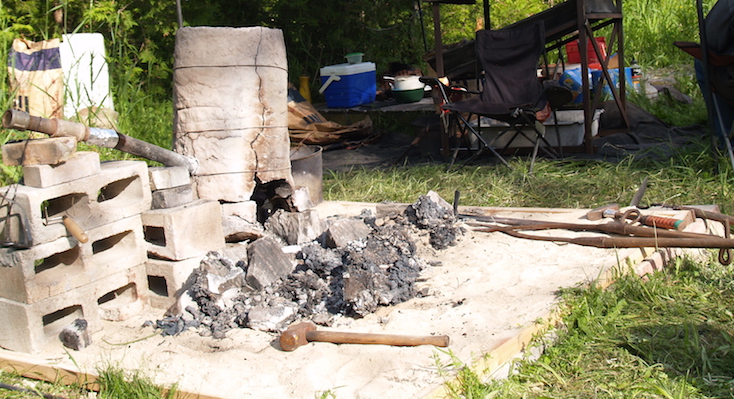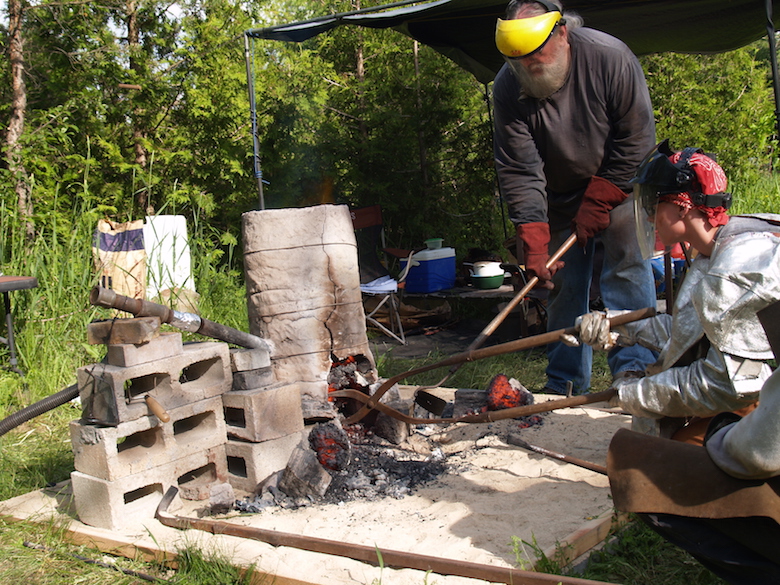'Look at all the BONES...'
Addition of Animal bones into a
Bloomery Iron Smelt
June 20, 2020
Smelt Team:
Neil Peterson, Rey Cogswell
Smelt Master : Darrell Markewitz
ABSTRACT
Several recent papers have suggested the
presence of small fragments of bone sometimes found within the
debris fields related to bloomery iron smelting point to a
possible 'ritual' practice, even so far as proposing a functional
impact on iron bloom quality. How might the physical process
within a complete iron making sequence effect the ability of bone
to endure, and thus remain to be recovered archaeologically? A
typical 'short shaft' furnace will be constructed and operated
through to bloom extraction on a clean working surface. Both bone
pieces and meat containing bone of several animal types will be
added, before, during, at at the final stage of the smelting
process. Afterwards, the debris field will be examined in detail
to determine what remains of the bones.
This is another lengthy report, more a draft for a possible paper later :
Part One : Build and Smelt
Additional : Smelt Images
Part Two : Excavation and Evaluation
" It is important that this experiment
makes no attempts to suggest ‘why’ Norse smelt masters may have
chosen to, or even if they ever did, add bone pieces into a
working furnace. Extreme care must be taken in any attempt to
apply ritual practice from other cultures, remote in time,
geography, working methods, and especially radically differing
world views.
" The fairly consistent destruction of any bones
added during charcoal charging does suggest that it is unlikely to
recover archaeologically anything beyond the uncommon and smallest
traces of added bones. The only likely situations where bone has
much chance of leaving traces after being added to a functioning
bloomery iron furnace :
- Meat containing bone, but only if added at the very end of the smelting sequence.
- Bones placed on the base layer of the furnace, before the smelt actually starts."



No comments:
Post a Comment